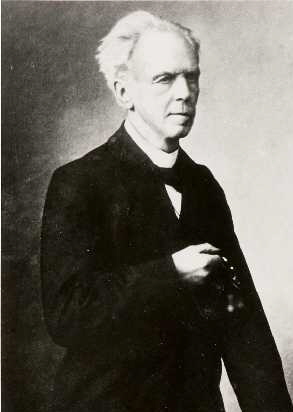|
|
|
|
Summary: Ernst Neumann was born at Königsberg, capital of former eastern prussia, as greatson of Karl Gottfried
Hagen (friend of Immanuel Kant, Professor of mathematics, physics, chemistry and pharmacie, see above) and as son of Franz Ernst Neumann, a pioneer in the mathematical physics (see above). In 1850, he enrolled at the
famous university of Königsberg (Albertina) where 5 decades before I. Kant still taught. In 1855 he took his doctors advice degree. After studies in Praque, Berlin (R.Virchow) and Königsberg (internal medicine), in 1859
he became a lecturer in medicine. He got interested in the rising field of pathological anatomie by Hermann.v.Helmholtz, then teaching at the Albertina. In 1866, E.N. was appointed professor of pathology at Königsberg.
In a preliminary communication (Centralblatt für die medizinischen Wissenschaften, Oct. 10th, 1868), and subsequent papers, E.N. described the presence of nucleated red blood cells in bone marrow sap of humans and
rabbits obtained by squeezing bones. On the basis of this observation, he was the first to conclude that during postembryonic life, erythropoiesis is taking place in the bone marrow. ... Further studies by E.N. pointed
to the fact that leukocytes are also formed in the bone marrow. Anticipating the essence of our present day cognitions, E.N. postulated a common stem cell for all hematopoietic cells. Unfortunately, outstanding
contemporary investigators were reluctant to accept his novel ideas. Until his death, E. Neumann was creative in research so that additional discoveries are linked to this "Virchow the East", e.g. myelogenous
leukemia, law of distribution of red and yellow bone marrow, description of dental sheath and congenital epulis. Two universities awarded him honorary doctorates (1898 Tübingen, 1914 Geneva).
|
Ernst Neumann private: Ernst Christian Neumann
was the grandson of K.G. Hagen (1749 - 1829), Professor of chemistry and pharmacy, and a son of Franz Ernst Neumann (1798-1895), a pioneer in the mathematical physics. Ernst Neumann enrolled at the Albertina Universität Königsberg (now Kaliningrad, Russia) in 1850, and received his doctorate in 1855. One of Neumann's teachers was the physician, physicist, and philosopher Hermann Ludwig Ferdinand von Helmholtz (1821-1894), who was professor at Königsberg from 1848 to 1855, and influenced Neumann towards pathology.
He was married with Anna Koenig, daughter of Friedrich Koenig, mathematician, Prof. at the “Kneiphöf´schen Gymnasium”. Her brother was Rudolph Koenig ( see Homepage http://www.gelehrtenfamilie-koenigsberg.net ) |
|
|
Ernst and Anna got 6 children, of which two of them, Gustav and Walter, died 1882 of diphtheria four and two years old. Another son died 1876 at the age of 15 years because of an accident. The daughter Helene Neumann (1874 - 1942) became a painter, Paul (1872-1920) was physician and Ernst Richard Neumann (1875 - 1955) became professor of mathematics in Breslau and Marburg, see http://gelehrtenfamilie-koenigsberg.net After becoming widowed in 1903, Ernst Neumann built a “Studienpavilllon” (study-pavilion) beside the home of his daughter at Rauschen, todays Svetlogorsk near by Koenigsberg at the baltic sea, picture see www.gelehrtenfamilie-koenigsberg.de/Helene_Neumann1.Leben.html At that home, which is mentioned from Max Askanazy in a review containing the literature of E.Neumann (see literature), Neumann continued studying hematology. During that time, he got in controversy with Paul Ehrlich (see button Rediscovery). After he died in 1918, he was buried in the 2nd Tragheimer cemetary of Königsberg
|
| [welcome] [Ernst Neumann] [Pathology] [Hematology] [stem cell] [Cytology] [Award] [Literature] [Archive] [celebrations] [Rediscovery] |

